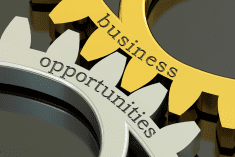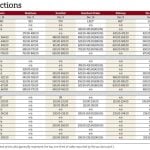Wages and rewards should be developed based on what motivates employees. Organizations that have low turnover
and content employees often provide compensation (wages and benefits) in well-thought-out reward packages.
Motivation:
On a lazy Sunday afternoon, you can research the many motivation theories, such as Maslow, McClelland, Hertzberg, and Expectancy Theory, just to name a few. As interesting as the theories are, the question to ask is what you believe motivates people. Is it money, a job well done, recognition, benefits, or something else? Your beliefs will impact the rewards you offer employees.
Read Also

It doesn’t have to be the end for your farm
Options for farmers without successors to pass on the farm.
Rewards:
Giving your employee tickets to a coveted game, a gift certificate for a great restaurant, diesel for their truck, a day off at harvest, or letting them operate the combine instead of the grain truck is a reward. You reward employees with more than money.
Being creative with rewards can increase your employees’ loyalty and motivation and reduce your costs. Sometimes a reward is cheaper and more valued than a wage increase. A good example of a no-cost highly valued reward is a sincere thank you, one where you look directly at your worker and tell them specifically what you like about what they did.
Direct compensation includes wages, bonuses, and benefits.
Benefits:
When thinking about which benefits to offer, consider what employees value. Also consider what works operationally, and what it costs. For example, training is
generally valued by employees (especially generation Y), and it is a benefit to both you and the employee. So it has value.
However, this benefit may have operational costs if training requires time off and getting replacement workers is an issue. So operationally there are some challenges.
From a cost perspective, what is the cost/benefit ratio? Is it an investment? An employee with pesticide training, or some specific training related to the operation, may be more productive and valuable to the farm. Keep in mind some benefits are taxable. The Government of Canada provides an employer’s guide to taxable benefits (search for publication T4130 at www.cra-arc.gc.ca).
Also consider the impact with before-and after-tax dollars. Assuming a 30 per cent tax bracket, $100 in wages is $70 in the employee’s pocket that they can use for paying medical insurance. If you buy the medical insurance and give the employee the remaining $30 in wages, they have $21 in pocket. The employee now has the benefit of $91, rather than $70, and you spend $100 in both cases.
Wages:
Everyone knows someone who earns more doing the same job. (People never mention those who get paid less.) Within rewards, wages are very prominent, so know where your wages fit in the market. Are you higher, average, or lower than market? Do you have a lead, match, or lag strategy?
First you have to know the external wage market. Often provincial ministries of labour will have wage data posted on their websites. There are also salary reports available online. For example, try the calculator available by searching for salary wizard at www.canadavisa.com.
Also, you can access wage data through private companies free or for a fee. Get data from a few sources to mitigate any data limitations that might be specific to one source. Also, check your local market by asking other farm operations and organizations what they pay.
One of the limitations of wage reviews is job diversity and trying to compare like jobs. There are other limitations with wage reviews, but having information with limitations is better than not having any information at all when you set your wages.
If you’re a larger farm operation and have a number of employees, consider internal fairness. Is pay equitable internally? Is there an appropriate wage difference or similarity between the jobs? In a hog operation, are the farrowing, breeding, and finishing techs paid the same wage? Should they be? Is the spread between the technician jobs and the manager’s job appropriate? Do people perceive the internal wages are fair in relation to each other?
In addition to wages, you can offer bonuses and other types of profit-sharing plans. The up side of this payment is the link to profit and outcomes. When the farm does well, you have the capacity to share the wealth. When there is no additional wealth to share, the base wage has not changed, so you’re not committed to the higher wage. If you’re considering some type of profit sharing or bonus, plan it out carefully.
You want your wages to be fair. Think first of motivation, then think of total rewards. Wages, benefits, and no-cost rewards in a well-thought-out package will motivate your employees and create greater satisfaction.CG
Leah Knibbs is the owner of Knibbs/ associates hr consulting and a partner in Knibbs/associates sourcing people. Both organizations provide HR services to agriculture organizations. Knibbs describes herself as a professional HR consultant who has raised meat rabbits. Contact her at [email protected] or 306-861-9864.














